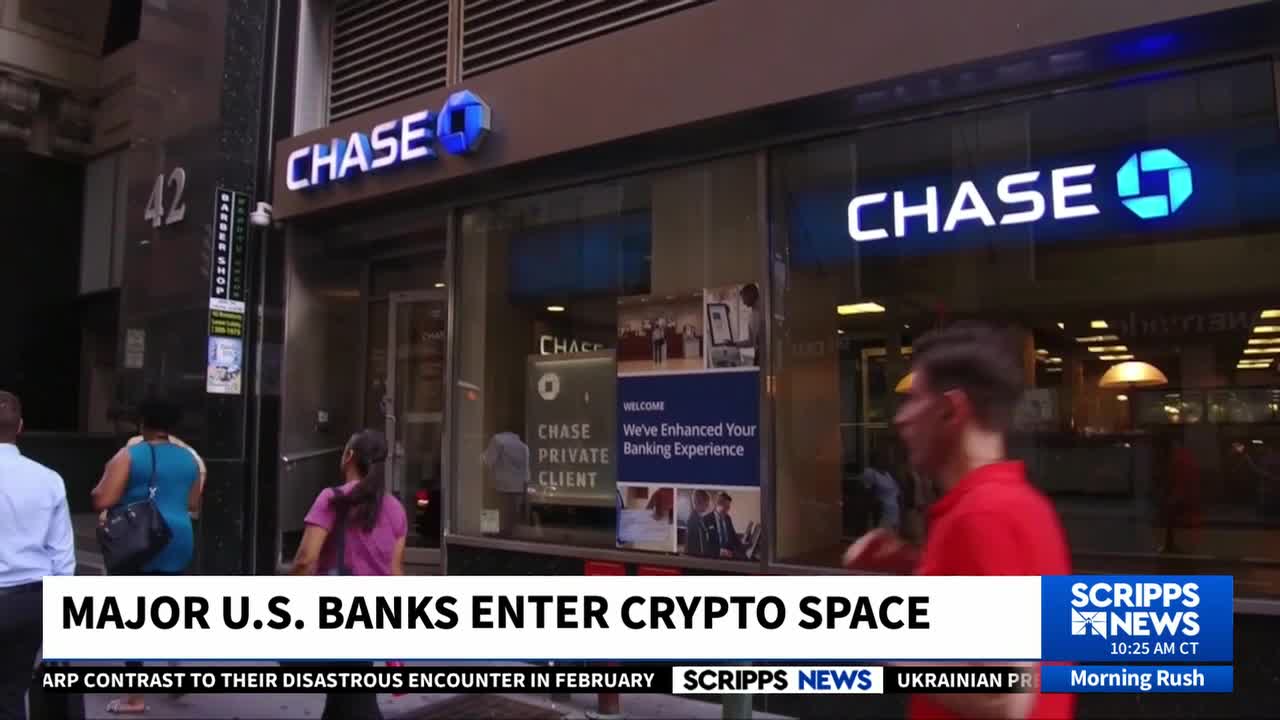In recent years, cryptocurrencies have captured public attention. From Bitcoin to stablecoins and even novelty "Trump coins," the digital currency conversation is everywhere.
Major banks are transitioning from limited pilot programs to widespread adoption, paving the way for two notable trends: a surge in mainstream investors and an increase in payment options.
"Now you'll see every bank kind of have a crypto strategy, have a stable coin strategy," said Christian Catalini, founder of MIT Cryptoeconomics Lab. "And so a lot of these instruments will appear in your day-to-day products."
IN CASE YOU MISSED IT | Bitcoin soars to all-time high as US lawmakers focus on pro-crypto legislation
Cryptocurrencies are defined as digital money that isn’t issued by any government. Their value fluctuates based on supply and demand, making them an attractive option for those looking to capitalize on price volatility.
However, this volatility can make cryptocurrencies less ideal for everyday transactions. Enter stablecoins, also known as tokens.
“Stable coins are essentially, I like to call them, programmable self-driving dollars that can move faster at a lower cost and friction all over the globe instantaneously,” Catalini explained.
Currently, stablecoins are typically tied to the U.S. dollar, providing a level of stability in a tumultuous market. Recognizing the potential of stablecoins, Bank of America and Citi recently announced their plans to introduce their own for payments and transfers.
JPMorgan Chase has already initiated testing on its token, known as JPM Coin. Retail giants like Amazon and Walmart are also exploring the possibility of their own coins.
“How will you experience all of this? Well, maybe suddenly you will see a better reward or loyalty program from your wallet, your bank, your fintech, and you'll be able to send money all over the globe 24/7, with less friction than you experience today,” Catalini explained.
The passage of the Genuis Act in July has opened the floodgates for U.S. stablecoins, enabling mainstream banks to navigate this evolving financial landscape.
RELATED STORY | President Trump signs GENIUS Act into law, regulating some cryptocurrencies
"It's niche because it wasn't really allowed in the U.S. market,” noted Del Wright, a law professor at Louisiana State University.
“All of these things that are the building blocks to integrate it into society are coming about," he added. "They're being made, they're being hatched. And we'll see it over time."
The implications for payments are significant: faster, cheaper options that could redefine how transactions are conducted.
"Payment infrastructure, many of us don't even think about it," Catalini pointed out. "We just pull out our phone or our card and we pay for things. But payments can be very expensive for merchants. They can be expensive for people trying to send money cross border."
As banks continue to innovate, it's clear that getting comfortable with cryptocurrency is becoming increasingly necessary.
"I think it's an important new asset class," Catalini remarked. "And so eventually, and what is even through your 401k, I think you will be faced with decisions that entail crypto."
This story was initially reported by a journalist and has been converted to this platform with the assistance of AI. Our editorial team verifies all reporting on all platforms for fairness and accuracy.




